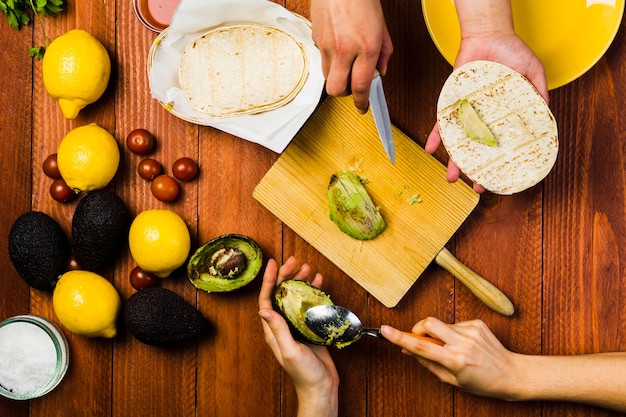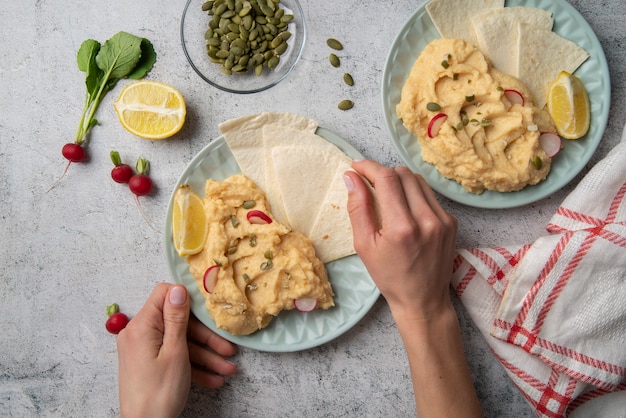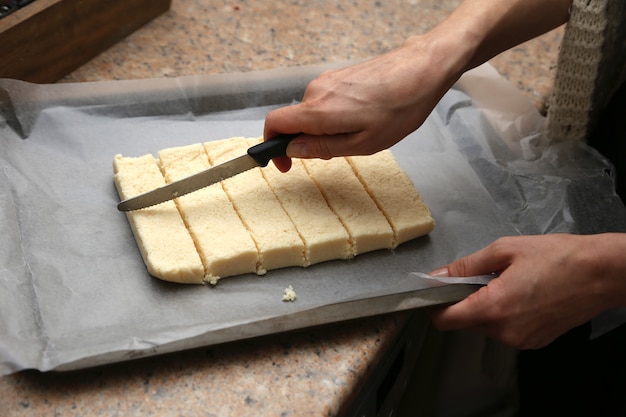I’ve always loved a challenge in the kitchen. Baking a cake, whipping up a curry – bring it on! But for years, tamales remained a culinary Everest for me. Those little bundles of joy, wrapped in corn husks, brimming with savory goodness, and steamed to perfection. Just looking at those intricate folds, those perfectly positioned pleats, seemed daunting. But, as with most things in life, it turned out to be far less intimidating once I actually got my hands dirty. And let me tell you, you can do it too!
This isn't just a recipe, folks. It's a journey, a delightful blend of discovery, flavor, and yes, a bit of frustration. We all have our kitchen moments, right? But trust me, the end result is worth every bit of effort.
So grab your aprons, gather your ingredients, and let's embark on this tamale-making adventure together.
(Part 1) The Foundation: The Dough

Understanding masa harina
Before we dive into recipes, we need to talk about the heart of the tamale: masa harina. You know, that stuff that makes the magic happen? It's basically corn flour, but not just any corn flour. It's nixtamalized, which is a crucial step. It means the corn has been treated with an alkali solution (usually lime), breaking down the starch and making it easier to digest. It's a process, but it's what gives the tamale its unique texture and flavor.
The Recipe
Let's be honest, there's no single perfect tamale dough recipe. Every family, every region has its own unique tweaks and additions. But here's a basic recipe that gets you started.
2 cups masa harina (you can experiment with different brands to find your favourite)
1 teaspoon baking powder (for a lovely, light texture)
1 teaspoon salt (seasoning is key, remember?)
1 1/2 cups of warm chicken broth (or vegetable broth, if you're making vegetarian tamales)
2 tablespoons of lard (or butter, if you're going for a lighter option)
1 tablespoon of olive oil (adds flavour and helps the dough come together nicely)
Mixing It Up
Now, for the fun (and slightly messy) part. You'll need a large bowl, a trusty wooden spoon, and some elbow grease.
Combine the dry ingredients: First, mix the masa harina, baking powder, and salt in your bowl.
Warm up the broth: Ensure your broth is warm, not hot. This helps the masa harina hydrate properly.
Mix it all together: Now, slowly add the warm broth to the dry ingredients, mixing with the wooden spoon until it forms a ball.
Add the fat: Time for the lard or butter! I'm a traditionalist, so I always use lard. It gives the tamales that irresistible richness and helps them stay moist. But feel free to experiment!
Knead the dough: Next, knead the dough for a few minutes until it's smooth and elastic. Don't worry if it seems a bit sticky, it's supposed to be.
Rest the dough: Once you've kneaded it, cover the bowl with plastic wrap and let the dough rest for about 30 minutes. This allows it to relax and become even more pliable.
(Part 2) The Filling: The Heart of the Tamale

Now, let's talk about the real star of the show: the filling. This is where you can really get creative. You can stick with classic flavors like pork or chicken, or go adventurous with vegetarian options like black beans or cheese. The world is your oyster!
Classic Pork Filling
1 pound pork shoulder (cut into cubes)
1 onion (chopped)
2 cloves garlic (minced)
1 green pepper (chopped)
1 red pepper (chopped)
1 teaspoon cumin
1 teaspoon chili powder
1 teaspoon oregano
Salt and pepper to taste
Chicken broth (for simmering)
How to Cook the Pork
Brown the pork: Heat a large pot or dutch oven over medium heat and add a bit of oil. Brown the pork cubes on all sides until nicely browned.
Add the aromatics: Add the chopped onion, garlic, green pepper, and red pepper to the pot and cook until softened, about 5 minutes.
Season the pork: Add the cumin, chili powder, oregano, salt, and pepper to the pot and stir to combine.
Simmer the pork: Pour in enough chicken broth to cover the pork and bring the mixture to a boil. Reduce heat to low and simmer, covered, for 1-2 hours, or until the pork is tender.
Shred and Mix
Shred the pork: Once the pork is cooked, remove it from the pot and shred it using two forks.
Add the shredded pork back to the pot: Add the shredded pork back to the pot with the broth and simmer for another 10 minutes. This allows the flavors to meld.
Preparing the Corn Husks
Now, let's talk about the corn husks. They're not just for show; they're the tamale's natural packaging, adding a subtle flavor and a lovely aroma.
Soaking the corn husks: You'll need to soak the corn husks in hot water for at least 30 minutes, or until they're pliable. This makes them easier to work with and prevents them from breaking.
Removing the dry outer layer: Once they're soaked, remove any dry outer layers from the corn husks. They're usually brown and brittle, and you don't want them in your tamales.
Preparing the corn husks: Now, you're ready to lay out the corn husks on a clean surface.
(Part 3) The Assembly: Putting It All Together

Layering the Magic
Lay out the corn husk: Choose a corn husk that's big enough to fold into a tamale shape.
Add the dough: Spread a thin layer of the masa dough onto the corn husk, leaving about an inch of space at the bottom. The dough should be about 1/4 inch thick.
Add the filling: Place a generous spoonful of your pork filling in the middle of the dough.
Fold the corn husk: Now for the part that can seem a bit tricky at first. Fold the bottom edge of the corn husk up over the filling, then fold in the sides.
Roll up the tamale: Roll the tamale up tightly, ensuring the filling is secure.
Fold the top: Fold the top edge of the corn husk over the tamale, tucking it in securely.
Secure with a piece of husk: Tie the tamale with a strip of corn husk, ensuring it's securely sealed.
The Steaming Process
Prepare the steamer: A large pot or steamer is perfect for this. Line the bottom with a few layers of damp cheesecloth. This helps prevent the tamales from sticking to the bottom of the steamer.
Place the tamales: Arrange the tamales in the steamer, standing upright. They should be snug but not overcrowded.
Steam the tamales: Cover the steamer with a tight-fitting lid and steam for 2-3 hours, or until the tamales are cooked through and the masa dough is firm.
(Part 4) The Finishing Touches: The Magic Sauce
Red Sauce
Ingredients:
1 (28-ounce) can of diced tomatoes
1 (15-ounce) can of tomato sauce
1 small onion, chopped
2 cloves garlic, minced
1 tablespoon chili powder
1 teaspoon cumin
1 teaspoon oregano
Salt and pepper to taste
Instructions:
Combine all ingredients in a saucepan.
Bring the mixture to a boil, then reduce heat and simmer for 30 minutes, or until the sauce has thickened.
Blend the sauce with an immersion blender for a smoother texture (optional).
Green Sauce
Ingredients:
1 (15-ounce) can of tomatillos, rinsed and drained
1 jalape??o pepper, seeded and chopped
1 small onion, chopped
2 cloves garlic, minced
1/2 cup chopped cilantro
1/4 cup water
Salt and pepper to taste
Instructions:
Combine all ingredients in a blender.
Blend until smooth.
Taste and adjust seasoning as needed.
(Part 5) Serving Time: Let the Feast Begin
The Big Reveal
Once your tamales are done steaming, carefully remove them from the steamer and let them cool slightly. This allows the masa to set and makes them easier to handle. Then, it's time for the big reveal!
Unveiling the Flavour
Using a sharp knife, carefully cut through the corn husk. It's like opening a little treasure chest. The steamy aroma, the beautiful golden color of the masa dough, the savory filling peeking through – it's a sensory experience.
Adding the Finishing Touches
Smother in sauce: Now comes the exciting part: douse your tamales in your favorite sauce. The red sauce adds a deep, rich flavor, while the green sauce brings a bright, tangy kick.
Top with garnishes: To complete the masterpiece, add some classic garnishes like chopped cilantro, shredded cheese, or a sprinkle of hot sauce.
(Part 6) Tamale Tips from a Tamale Pro
Okay, I've been making tamales for years now, and I've learned a few things along the way. Here are some tips to help you become a tamale master:
Don't overcrowd the steamer: Give your tamales some space to breathe. If they're too crowded, they won't cook evenly.
Use a steamer basket: A steamer basket helps ensure the tamales are not sitting in water, which can make the masa soggy.
Don't overfill the tamales: A little filling goes a long way. Overfilling your tamales will make them difficult to roll and can cause them to burst.
Check the tamales: After about an hour of steaming, check the tamales by gently peeling back a corner of the corn husk. If the masa is firm and the filling is cooked through, they're done.
(Part 7) Variations on a Theme: Beyond the Classic
Now, let's talk about the wonderful world of tamale variations.
Vegetarian Tamales
Black bean tamales: Replace the pork filling with a mixture of black beans, corn, onions, and spices.
Cheese tamales: Fill the tamales with a mixture of cheese, peppers, and onions.
Mushroom tamales: Use a sautéed mushroom mixture, flavored with herbs and spices, for a hearty vegetarian filling.
Sweet Tamales
Pineapple tamales: Use a sweet filling of crushed pineapple, brown sugar, and spices.
Chocolate tamales: For a decadent treat, try a filling of melted chocolate, cinnamon, and sugar.
(Part 8) The Legacy: A Culinary Tradition
The tamale, my friends, is more than just a delicious dish. It's a symbol of heritage, of family gatherings, of shared traditions. It's a dish that brings people together, sharing stories, laughter, and of course, good food.
Every time I make tamales, I think about my grandmother, who taught me her recipe. She'd always say, "Tamales are a labour of love, but the joy they bring is worth every bit of effort." And she was right.
So next time you're feeling adventurous in the kitchen, give tamale making a try. It's a rewarding experience, and a delicious one too!
FAQs
1. How long do tamales last?
Tamales can last for up to 3 days in the refrigerator. They're best eaten fresh, but you can also freeze them for up to 3 months. Just make sure to wrap them well in plastic wrap or foil before freezing. When you're ready to enjoy them, thaw them in the refrigerator overnight and then reheat them in a steamer or microwave.
2. Can I use store-bought masa harina?
Absolutely! You can find pre-made masa harina at most grocery stores. Just make sure to follow the instructions on the package. Sometimes, the store-bought versions might need a little extra liquid to achieve the right consistency.
3. What if my corn husks are too dry?
If your corn husks are too dry, you can soak them in warm water for a longer period of time. You can also add a little bit of corn oil to the soaking water to help soften them. Another trick is to use a damp towel to wrap the corn husks after they've been soaking.
4. What can I do with leftover tamales?
Leftover tamales make a delicious breakfast or lunch. You can also add them to soups, stews, or salads. Think of them as little flavor bombs waiting to be unleashed!
5. What if my tamales are not steaming properly?
If your tamales are not steaming properly, make sure that the water level in the pot is high enough to reach the bottom of the steamer basket. You can also add a few ice cubes to the water to help create more steam. It's also important to ensure the lid is securely fitted.
I hope this guide has given you the confidence to embark on your own tamale-making journey! Remember, it's all about having fun and enjoying the process. Happy tamale-making!
Everyone is watching

Prime Rib Roast Cooking Time Chart: Per Pound Guide
Cooking TipsPrime rib roast. Just the name conjures images of lavish dinners, crackling fires, and hearty laughter. It’s ...

How Long to Bake Potatoes in the Oven (Perfect Every Time)
Cooking TipsBaked potatoes are a staple in my kitchen. They're incredibly versatile, delicious, and surprisingly easy to m...

Perfect Rice Every Time: The Ultimate Guide to Cooking Rice
Cooking TipsAs a self-proclaimed foodie, I've always been a bit obsessed with rice. It's the foundation of countless cuisi...

The Ultimate Guide to Cooking Asparagus: Tips, Techniques, and Recipes
Cooking TipsAsparagus. The mere mention of this spring delicacy conjures up images of vibrant green spears, crisp and burs...

Ultimate Guide to Cooking the Perfect Thanksgiving Turkey
Cooking TipsThanksgiving. Just the word conjures up images of overflowing tables laden with delicious food, the scent of r...
